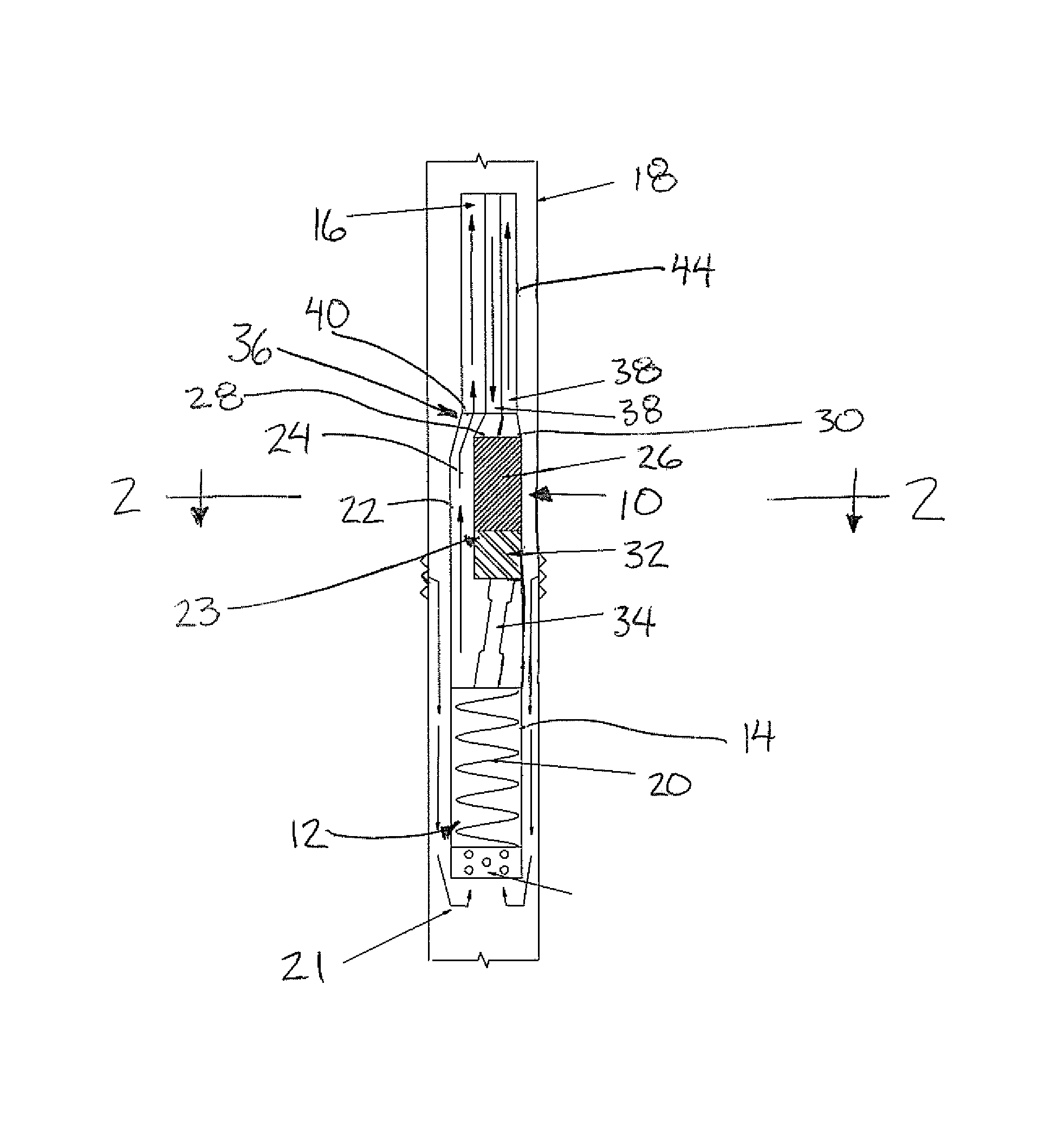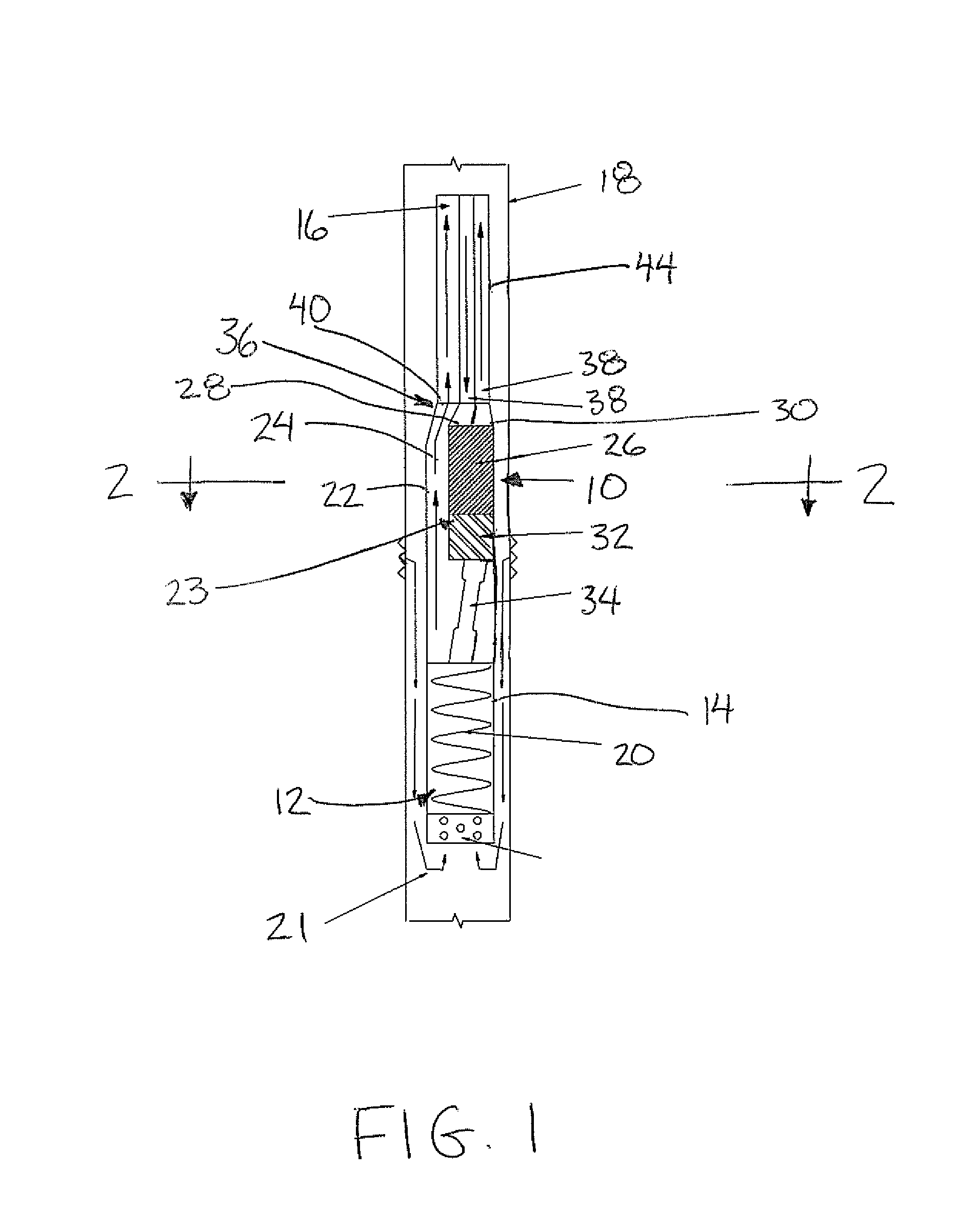Submersible progressive cavity pump driver
a submersible and progressive technology, applied in the direction of positive displacement liquid engines, liquid fuel engines, borehole/well accessories, etc., can solve the problems of mechanical wear of rods and tubing strings, high service times, and large manpower exposure, so as to reduce the overall size of production tubes, reduce costs, and extend the operational life of string strings
- Summary
- Abstract
- Description
- Claims
- Application Information
AI Technical Summary
Benefits of technology
Problems solved by technology
Method used
Image
Examples
first embodiment
[0085]Turning now more particularly to the production housing 22 of FIGS. 1 and 2, the motor connection 23 in this instance comprises an integral connection between the production housing and the motor chamber locating the drive motor 26, and bearing box 32 therein. The production passage of the production housing is supported to extend alongside the drive motor such that the production outlet at the top end of the housing and the input to the drive motor are arranged for direct connection to the connector 36 which connects to the production tubing and the control lines thereabove. The drive motor is supported in this instance by the motor connection of the production housing such that the output axis of the motor is offset in a radial direction from the stator of the progressive cavity pump therebelow and the production tubing connected to the production outlet of the production housing thereabove.
[0086]Turning now more particularly to the second embodiment of the production housin...
second embodiment
[0088]In the second embodiment, the production outlet of the production housing 22 communicates in series with an auxiliary production tube 100 which extends alongside the drive motor between the production housing and the connector 36. A top end of the auxiliary production tube 100 may be offset from the bottom end such that the top end can optionally be located coaxially with the motor output at a location above the motor when the bottom end is coaxial with the production outlet of the production housing 22.
[0089]As shown in FIG. 5, when the second embodiment of the production housing 22 is used with the production tubing of FIG. 4, the production port in the connector may be arranged to connect between the production tubing thereabove and the auxiliary production tube 100 therebelow such that the motor is suspended in line below the production tubing with an output of the motor and the pump stator therebelow being substantially coaxial with a central longitudinal axis of the prod...
PUM
 Login to View More
Login to View More Abstract
Description
Claims
Application Information
 Login to View More
Login to View More - R&D
- Intellectual Property
- Life Sciences
- Materials
- Tech Scout
- Unparalleled Data Quality
- Higher Quality Content
- 60% Fewer Hallucinations
Browse by: Latest US Patents, China's latest patents, Technical Efficacy Thesaurus, Application Domain, Technology Topic, Popular Technical Reports.
© 2025 PatSnap. All rights reserved.Legal|Privacy policy|Modern Slavery Act Transparency Statement|Sitemap|About US| Contact US: help@patsnap.com



